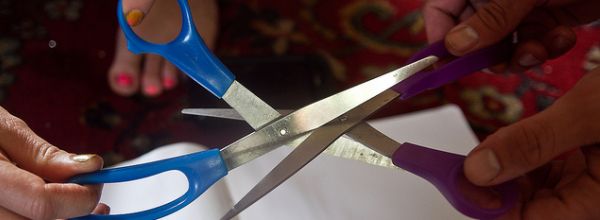Presenting science concisely poses many challenges: How do you say enough without saying too much? Are you capturing the main points? Does this research paper abstract attract the reader’s attention and make them want to read your paper? That last question is the most important and the most overlooked one. And to address it, many journals encourage or even require authors to submit a graphical abstract.
A graphical abstract is a single figure that is showcased alongside the traditional textual scientific abstract to more succinctly tell your story.
Benefits of a Graphical Abstract
There are many benefits to providing a visual representation of your work.
A Graphical Scientific Abstract Quickly Tells Your Story.
A graphical abstract delivers the primary point of the paper at the very beginning, which improves the reader’s interpretation of the paper. Scientific articles are often drowning in detail, all of which is necessary to truly understand and interpret the results, but the main points can get lost. A graphical abstract will point out the most important, citable findings in the paper, as a well-packaged take-home message.
A Graphical Abstract Publicizes Your Paper
A graphical abstract serves as a promo for the main event—your paper. Most readers skim through hundreds of text research paper abstracts, looking for the handful of papers relevant to their interests. They want to know what questions were asked in the paper and the results of those questions. Often readers rely on keywords and phrases to determine relevance. All of those relevant terms can be clearly illustrated with a good graphical abstract, where the data stands out rather than being hidden within the text. A picture is worth a thousand words, and a figure is faster and easier for the reader to understand, too.
A Graphical Scientific Abstract Is Recyclable
Once you’ve made a graphical abstract, you can use it in presentations, in blog posts, on Twitter, on Facebook, on conference posters, etc. The more you use it, the more identifiable your paper is among others.
Making an Effective Graphical Research Paper Abstract
Having decided to submit a graphical scientific abstract, how do you go about making a good one?
Make sure that you know the main points. Write out the take-home message in as few words as you can, and then condense it some more. Further simplify the main points until you have only a sentence or two. This should be the inspiration behind the graphical scientific abstract.
Pay attention to what has worked for others. While you will want your graphical abstract to be original, looking at examples can help you to hone in on what to include and what to leave out. The Cell Press guidelines for submitting a graphical abstract include examples of different styles of graphical abstracts and how to improve on them. Don’t stop there: scour the journal you are submitting to for previously published graphical abstracts and you may pick up a few tips from the style, fonts and colors used.
Style your scientific abstract to match your results. The flow of the image depends of the kind of data you’re presenting. If your results are that A leads to B, then an arrow between two images can depict that clearly. If you’re trying to find the missing link between A and C, then a question mark or blank between two images would illustrate this. If the research uncovers a protein or DNA structure, then showcase a picture of that structure. Are you uncovering a mechanism? A flowchart could be a handy illustration. These are only a few examples of styles for a graphical abstract. There are many more out there!
Include only keywords. What are those specific phrases that the reader is looking for to determine what the paper is taking about? You may strategically place those in the image, but use them sparingly. It’s OK to leave out the minute details—the text scientific abstract and the paper will have those.
Most importantly: Make it self-explanatory. If the reader has to spend 20 minutes to decipher your busy graphical abstract, then that defeats the purpose and might even put the reader off your paper. Present a clear and direct picture that can be understood at a glance. Once you’ve formed your figure, ask a colleague to look at it and tell you what the take home message is. Note important points that they weren’t able to grasp, and details they picked up that don’t need to be emphasized and adjust the graphical abstract accordingly.
Graphical Abstract Formats
There are many options for formatting your graphical abstract. The publishing journal will usually have a set of guidelines. The most common format is a simple JPEG or TIFF image that occupies a single column.
However, online journals offer the freedom to be much more creative. Those journals might allow authors to submit GIFs and even 3D rotation diagrams for a more interactive experience. Some journals welcome audio and video scientific abstracts. An added perk to online, open-access journals is that images with color come at no extra charge to the authors.
On using color, you’ll want to stay away from a boring illustration that consists of shades of gray, but you also don’t want to use excessively bright colors that clash together. Additionally, color blind readers should be accommodated, so don’t use red and green for all your colors. This video provides helpful tips on choosing the right color scheme for your graphical abstract and figures in general.
Making a graphical abstract can seem like a daunting artistic endeavor to a scientist. It helps to remember that you already have all the data, and after writing, re-writing, reading and re-reading your paper, you already know what you want to say. Putting it into a succinct, attractive format is the icing on the cake. With these tips, you are on your way to developing a brilliant graphical abstract that will be a valuable addition to your work.






